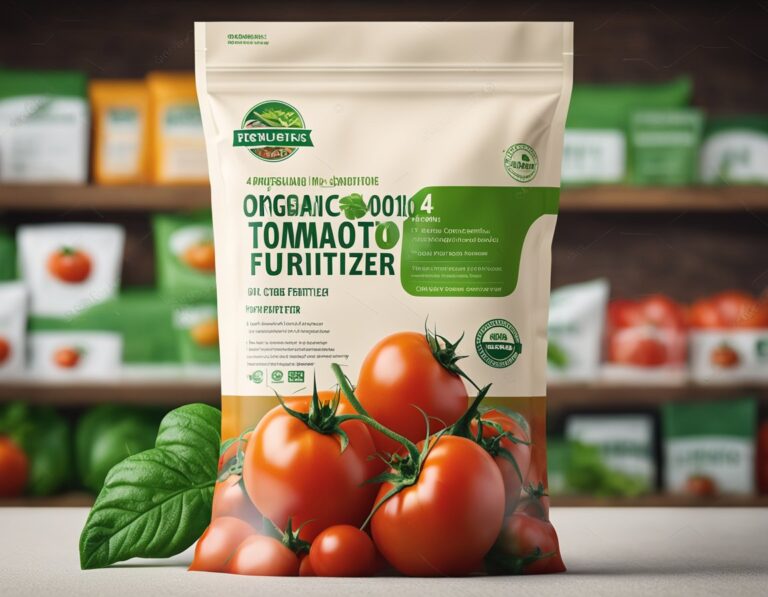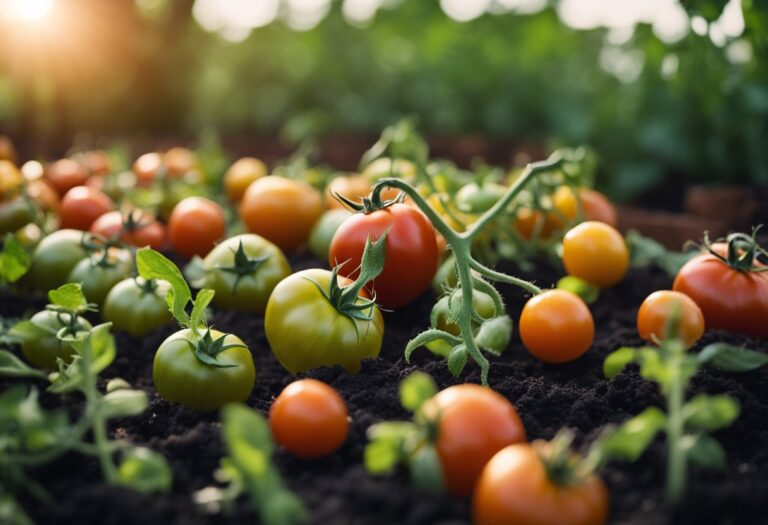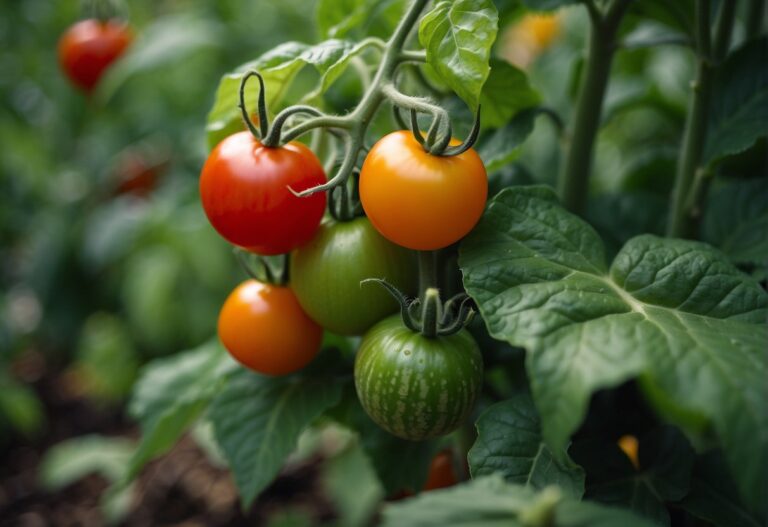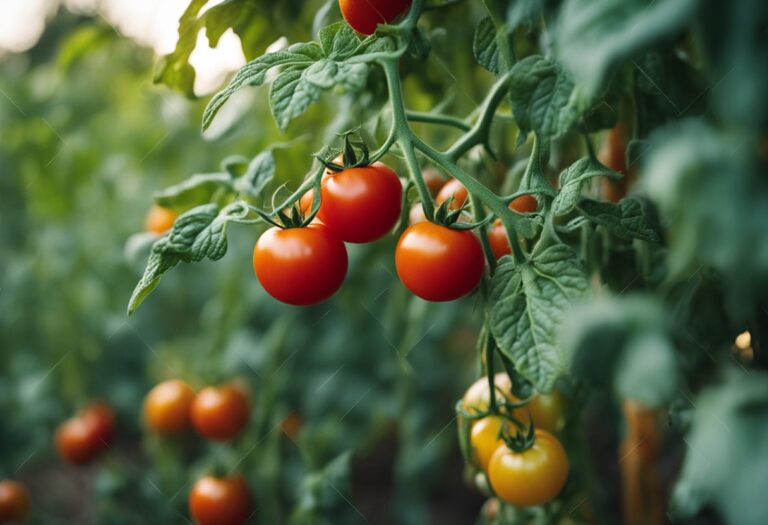Growing Tomatoes in Small Spaces: Tips and Tricks
Growing tomatoes in small spaces is a great way to enjoy fresh, homegrown tomatoes even if you don’t have a lot of outdoor space. With a little bit of planning and some careful care, you can successfully grow tomatoes in containers on a balcony, patio, or even a sunny windowsill.
Whether you’re a seasoned gardener or a novice, growing tomatoes in small spaces can be a rewarding and enjoyable experience.
To get started, you’ll need to choose the right tomato variety for your space, as some varieties are better suited to container gardening than others.
You’ll also need to make sure your plants get enough sunlight, water, and nutrients to thrive. With proper care, your tomato plants will produce a bountiful harvest of delicious, juicy tomatoes that you can enjoy all season long.
Key Takeaways
- Growing tomatoes in small spaces is possible with proper planning and care.
- Choose the right tomato variety for your space and make sure your plants get enough sunlight, water, and nutrients.
- With proper care, your tomato plants will produce a bountiful harvest of delicious, juicy tomatoes.
Growing Tomatoes in Small Spaces
If you have limited space but still want to grow tomatoes, you’re in luck! With the right variety, container, and planting process, you can successfully grow juicy, ripe tomatoes in even the smallest of spaces.
Choosing the Right Variety
When it comes to growing tomatoes in small spaces, it’s important to choose the right variety. Look for compact, dwarf, or patio varieties that are specifically bred for container gardening. These varieties tend to stay smaller and more compact, making them perfect for small spaces.
Some great varieties to try include Tiny Tim, Patio Princess, and Bush Early Girl. These varieties are perfect for container gardening and produce delicious, juicy tomatoes.
Container Selection
When growing tomatoes in small spaces, container selection is key. Look for containers that are at least 18 inches in diameter and 24 inches deep. This will give your tomato plants plenty of room to grow and produce fruit.
You can use a variety of containers, including pots, buckets, or even grow bags. Just make sure that the container has drainage holes to prevent water from pooling and causing root rot.
Planting Process
When planting your tomato plants, make sure to use high-quality potting soil that is specifically formulated for container gardening. This will provide your plants with the nutrients they need to grow strong and healthy.
Plant your tomato plants in the center of the container and make sure to provide support, such as a tomato cage or stake. Water your plants regularly and fertilize them every two weeks with a balanced fertilizer.
By following these simple steps, you can successfully grow delicious, juicy tomatoes in even the smallest of spaces. Happy gardening!
Caring for Your Tomato Plants
Watering Techniques
Watering your tomato plants is crucial to their growth and health. You should water your plants deeply once a week, making sure the soil is moist but not waterlogged. Overwatering can cause root rot and other diseases.
To prevent water from evaporating too quickly, it’s best to water your plants early in the morning or late in the evening. You can also add a layer of mulch around the base of your plants to help retain moisture in the soil.
Fertilization
Tomato plants require regular fertilization to thrive. You should fertilize your plants every two to three weeks during the growing season. Use a balanced fertilizer with equal parts nitrogen, phosphorus, and potassium.
Alternatively, you can use organic fertilizers such as compost or manure. These will provide the necessary nutrients for your plants without the risk of chemical buildup in the soil.
Remember not to over-fertilize your plants, as this can cause them to grow too quickly and become weak. Follow the instructions on the fertilizer packaging and adjust accordingly based on your plant’s needs.
By following these simple watering and fertilization techniques, you can ensure that your tomato plants will grow healthy and strong in even the smallest of spaces.
Pest and Disease Management
When growing tomatoes in small spaces, it is important to keep an eye out for pests and diseases that can damage your plants. Here are some tips to help you manage common tomato pests and diseases:
- Aphids: These small insects can be controlled by spraying your plants with a jet of water from the hose, knocking the aphids off of the plant. Be careful not to break your plant. Consider releasing beneficial insects that can take care of these pests, such as ladybugs or lacewings.
- Blossom end rot: This is a common problem that causes the bottom of the tomato to turn black and leathery. Blossom end rot is caused by a lack of calcium in the soil. To prevent this, make sure your soil is rich in calcium and keep the soil evenly moist.
- Fusarium wilt: This fungal disease causes the leaves of the tomato plant to wilt and turn yellow. Infected plants should be removed and destroyed. To prevent this disease, rotate your tomato plants with other crops and avoid planting tomatoes in the same spot for more than two years.
- Tomato hornworms: These large green caterpillars can be controlled by handpicking them off of your plants. You can also use Bacillus thuringiensis (Bt), a natural insecticide, to control these pests.
- Early blight: This fungal disease causes dark spots on the leaves of the tomato plant. To prevent this disease, water your plants at the base and avoid getting the leaves wet. You can also use a copper fungicide to control early blight.
By following these tips, you can prevent common tomato pests and diseases from damaging your plants and enjoy a healthy harvest.
Harvesting and Storage
When it comes to harvesting tomatoes, the best time to do so is when the fruit is fully ripe. A ripe tomato should feel slightly soft when you gently squeeze it, and the skin should be a deep, vibrant color. If you’re unsure whether a tomato is ripe or not, you can always do the “sniff test” – a ripe tomato should have a sweet, slightly fruity smell.
Once you’ve harvested your tomatoes, it’s important to store them properly to ensure they stay fresh for as long as possible. Tomatoes should be stored at room temperature, away from direct sunlight.
If you have a lot of tomatoes that need to be stored, you can place them in a single layer in a cardboard box or on a tray. Do not stack them on top of each other as this can cause bruising or spoilage.
If you have tomatoes that are not yet ripe, you can ripen them off the vine by placing them in a paper bag with a banana or apple. The ethylene gas produced by the fruit will help to speed up the ripening process. Keep an eye on the tomatoes and check them daily, as they can ripen quickly.
Frequently Asked Questions
What are some short tomato plant varieties suitable for small spaces?
If you have limited space, you can still grow tomatoes. There are several short tomato plant varieties that are suitable for small spaces.
Some of these varieties include cherry tomatoes, patio tomatoes, and determinate tomatoes. These plants grow to a maximum height of 3-4 feet and are perfect for small spaces.
What is the best way to plant tomatoes in the ground in a small space?
When planting tomatoes in the ground in a small space, it is important to prepare the soil properly. Ensure the soil is well-drained, rich in nutrients, and has a pH range of 6.0-7.0.
Plant the tomatoes in a spot that receives at least 6-8 hours of sunlight per day. Space the plants at least 2 feet apart to allow for good air circulation.
Are there any helpful videos for growing tomatoes in small spaces?
Yes, there are several videos available online that can help you grow tomatoes in small spaces. One such video is Growing Tomatoes in Containers & Small Spaces by Epic Gardening. This video provides step-by-step instructions on how to grow tomatoes in containers and small spaces.
What are some recommended small indeterminate tomato plants for small spaces?
If you prefer indeterminate tomato plants, there are several small varieties that are suitable for small spaces.
Some of these include Sweet 100, Tumbling Tom, and Tiny Tim. These plants grow to a maximum height of 3-4 feet and produce an abundance of tomatoes.
How can I create a garden of tomatoes in a small space?
To create a garden of tomatoes in a small space, you can use containers, raised beds, or hanging baskets. Choose the right size container or raised bed for your tomato plant and ensure it has proper drainage.
Hanging baskets are a great option for small spaces as they can be hung from a balcony or patio railing.
What are some tips for growing healthy tomatoes in small spaces?
To grow healthy tomatoes in small spaces, ensure the plants receive at least 6-8 hours of sunlight per day. Water the plants regularly, but avoid overwatering. Use a well-draining soil mix and fertilize the plants with a balanced fertilizer.
Prune the plants regularly to promote good air circulation and remove any diseased or damaged leaves.




